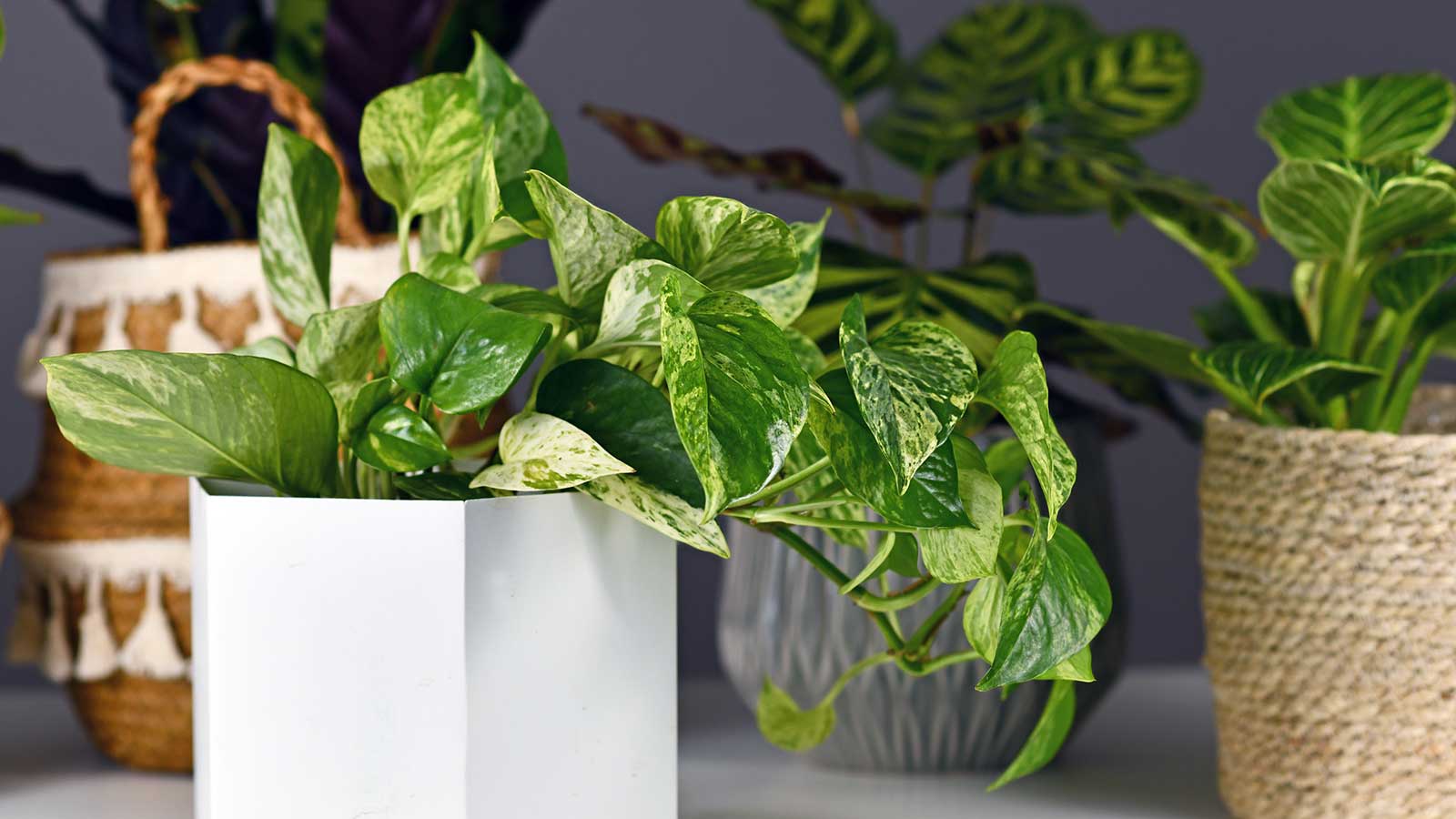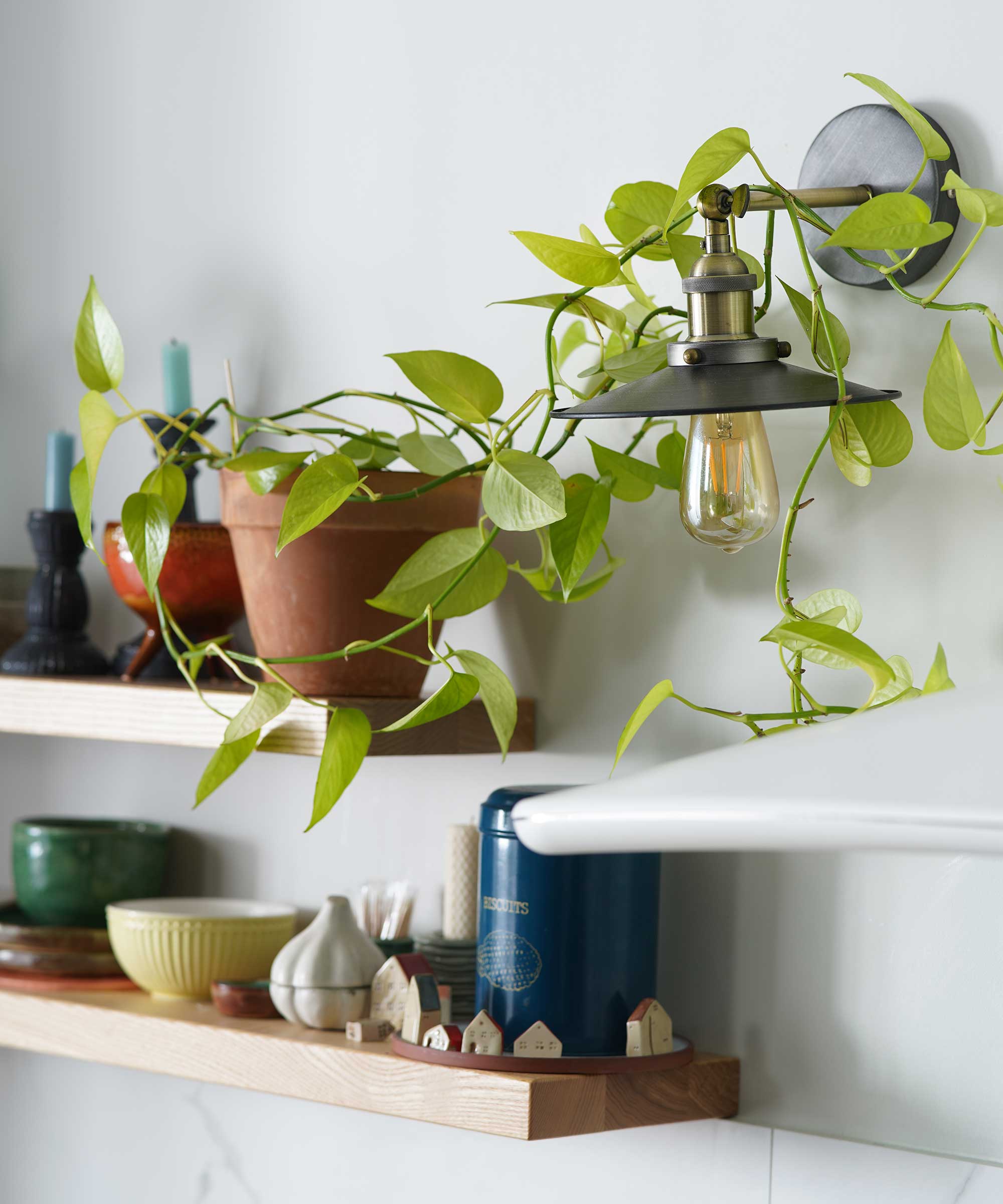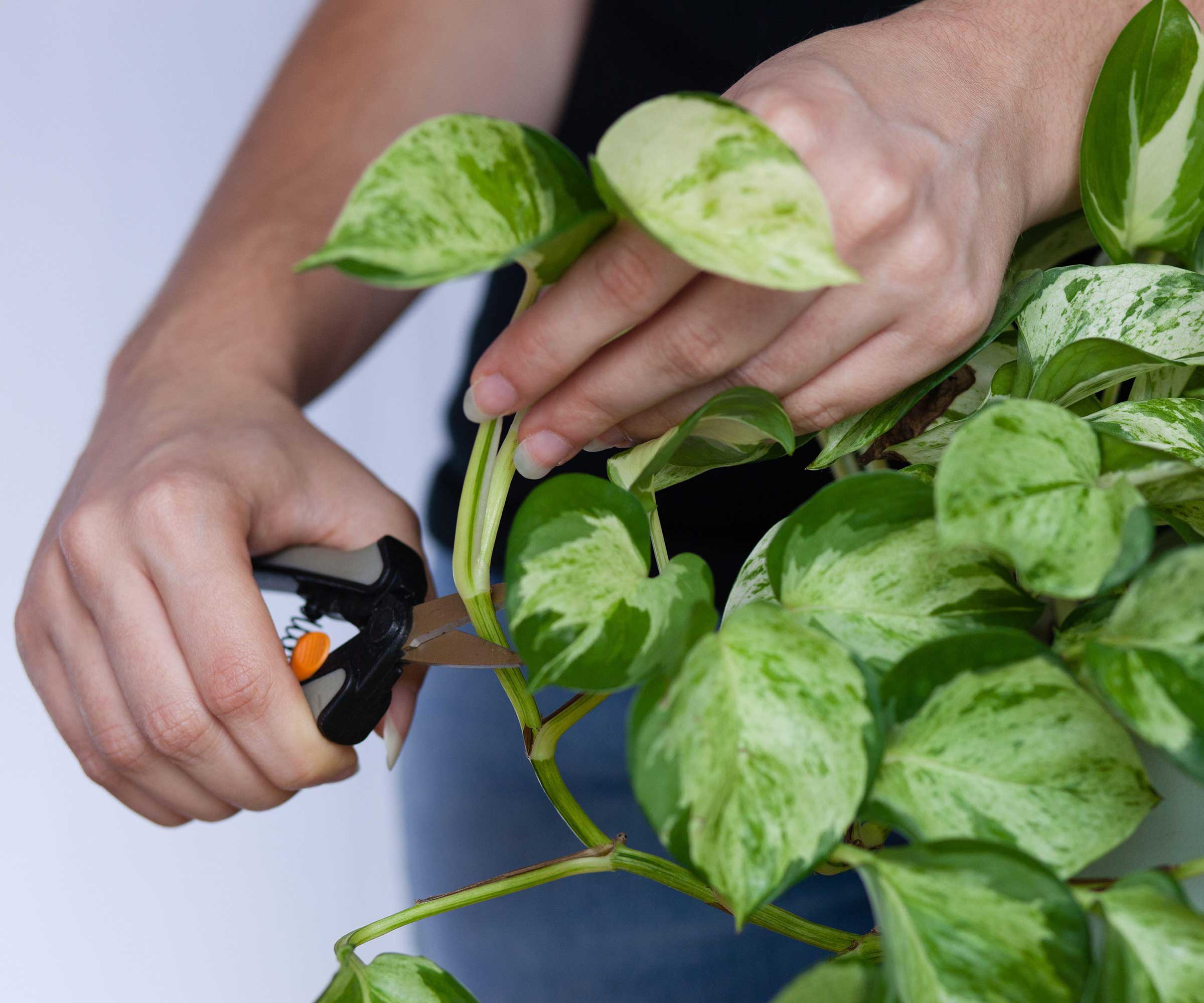How to propagate pothos – this easy technique gave me two new houseplants for free
Pothos are undemanding indoor plants to look after and propagating them is simple, too


My houseplant collection has steadily grown over the years, but my pothos plants have to be my favorites. There are four in my apartment that are rather impressively-sized – two on a mantelpiece, one on a shelf, and one hanging in the kitchen.
Their trailing stems make a real impact; they’re undemanding to look after, and they've stayed (quite amazingly) pest-proof, despite a nearby plant developing a major aphid problem. They're also known for being one of the easiest houseplants to propagate. So, when I set about selecting plants for propagation this summer, pothos were top of the list.
While the spider plants, aloes, and snake plants could be divided into new plants, I tackled my pothos propagation by taking cuttings. I’m pleased to say it was a great success, and now there are two new pothos plants growing steadily but surely on the windowsill.

Pothos are perfect for placing up high
How to propagate pothos in 5 steps
As always when taking cuttings, ensure you start with a healthy parent plant. I chose to propagate a golden pothos (which are available from The Sill) that was particularly luscious and full – afterward, you could barely tell that cuttings had been taken.
Here’s how to do it:
- Take a sharp and clean pair of pruners and cut a 6-inch section from the end of a growing stem. I then took a second cutting from the same stem, below the first cutting point. Make your cuts just below a leaf or growth node – these look like small bumps on the stem. Each cutting should have two or three leaves on it.
- Remove the bottom leaf (you don't want this to be buried in the soil) and insert the bottom two inches or so of each cutting into small pots of well-draining potting mix. I mixed mine with a small amount of horticultural grit for extra drainage.
- Lightly water the potting mix and place the cuttings somewhere that’s warm and gets plenty of light. Avoid direct sun.
- Humidity can be beneficial for encouraging your cuttings to root. As well as lightly watering the potting soil when it felt dry, I misted my cuttings once or twice a week. This colorful glass mister from Terrain is perfect for the job and looks pretty, too. You could also cover the pots with a clear bag, recommends Vladan Nikolic, a houseplant expert.
- They may seem a little droopy at first, but after a week or so, they should start to look more upright. Once new growth has appeared, you can pot them up into larger containers and keep caring for them as you would your fully-grown pothos.

Vladan Nikolic, otherwise known as Mr. Houseplant, is a houseplant expert with over 10 years of experience. He is the Founder of the houseplant care blog MrHouseplant.com and also an influencer who helps newcomers in the houseplant world become great plant parents. You can find him on Instagram, TikTok, Youtube, Facebook, Twitter and Pinterest.

Cut just below a leaf or growth node
FAQs
When should you propagate pothos?
It’s always best to propagate houseplants during their growing season, which tends to be during the warmer months of spring or summer. I took my pothos cuttings in midsummer and they were quick to root.
How long does it take for pothos cuttings to grow?
New leaves should appear within around four to six weeks, under the right conditions. Growth should continue until the plant goes into dormancy when the temperature cools.
It’s worth mentioning that the cutting I took from the stem tip produced a new leaf slightly faster than the cutting taken from a section of stem lower down, but only by a week or so.
Can you propagate pothos cuttings in water?
Yes, like many houseplants, including monstera and fiddle leaf figs, you can propagate pothos cuttings in water. Just remember to stay clear of the common water propagation mistakes.
'Ensure only the stem is submerged – the leaves shouldn’t touch the water’s surface,' says Vladan Nikolic of the Mr. Houseplant blog. Put the glass in a spot with plenty of bright, indirect light, and replace the water weekly, or as soon as you notice it getting dirty, he adds.
Once they have established a good root system (Vladan recommends waiting until the roots are 1-2in long), you can pot them up into soil.
Although pothos are one of the toughest houseplants out there, they still need the right care and growing conditions to truly thrive. So, if your pothos are wilting or turning yellow, it’s time to give yours a bit of attention. The good news is, they often bounce back to full health.
Sign up to the Homes & Gardens newsletter
Design expertise in your inbox – from inspiring decorating ideas and beautiful celebrity homes to practical gardening advice and shopping round-ups.

Holly started writing about gardening five years ago, and she is a regular contributor to Homes & Gardens. She has also written many gardening features for Woman & Home and Real Homes, too. She has previous experience as a professional gardener, where she helped to plant and maintain private gardens. Holly has also looked after allotment plots over the years and loves to grow her own flowers and veggies from seed. In her spare time, she enjoys visiting local gardens, botanical drawing, and tending to her ever-growing collection of houseplants.
-
 I’m an HVAC technician, and this is when I turn my AC on each year – plus 5 checks I always do beforehand
I’m an HVAC technician, and this is when I turn my AC on each year – plus 5 checks I always do beforehandSave yourself an AC hassle by running my checks and turning it on before big heat hits
By Josh Mitchell Published
-
 This simple marble hack elevates my budget-friendly wooden kitchen countertops and prevents the dreaded water damage for way less than you’d think
This simple marble hack elevates my budget-friendly wooden kitchen countertops and prevents the dreaded water damage for way less than you’d thinkThis design trick looks expensive, solves a problem, and was the easiest decision I made during my kitchen reno
By Charlotte Olby Published